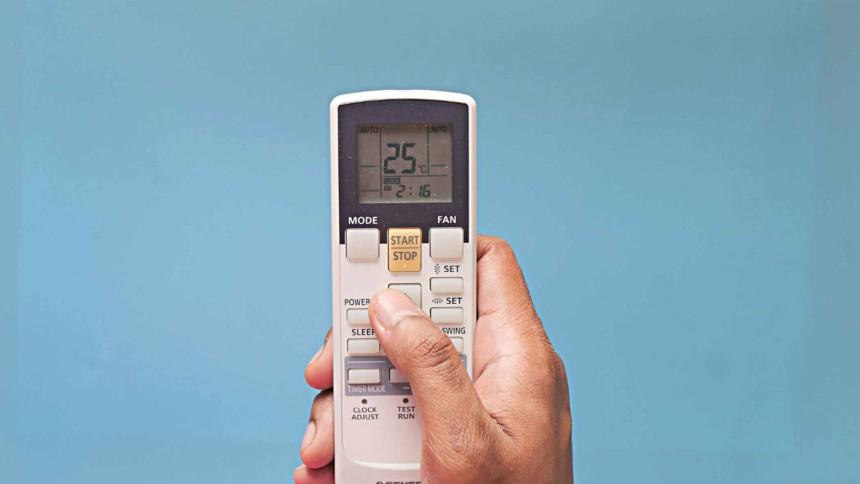Buying an AC this summer: Everything you need to know

Things to consider
Room measurements
The first thing to consider when buying an AC is the size of the room it will be placed in. Several online calculation tools measure the required tonnage (or cooling capacity) for an AC based on room size. But the easiest method is to multiply the length and breadth of a room (in feet), take the square root of the result and divide it by 10. Alternatively, the volume of the room can be measured (in cubic feet) and divided by 1000, which shows how many tons an AC should be for efficient cooling. Apart from room size, placement of windows and a number of sun-facing walls are also factors to consider. A representative from Singer says, "Considering average room size customers are most likely to purchase ACs between 1 to 1.5 tons for home use. For offices and commercial spaces, the bigger 2 to 5 ton ACs are needed". To avoid calculations, the rule of thumb says a 1 ton AC covers up to 100 square feet, 1.5-ton covers around 180 square feet and a 2 ton AC can cool up to 240 square feet of space.
Types and brands of air conditioners
From the cheaper but almost obsolete window unit to the latest energy-saving inverter models, there are many kinds of air conditioners to choose from. While a window AC may be the cheapest option, it still requires sufficient space and wall thickness for support. While commercial spaces use central air conditioning or ceiling ACs, the slimmer split models are the most popular choice for households. While inverter ACs are comparatively more expensive than their non-inverter counterparts, for usage exceeding 4 hours a day, an inverter AC might be more efficient in the long run. In terms of brand, there are many options available in the market, such as Hitachi, LG, Philips, Singer, Haier, Whirlpool and Kelvinator or domestic brands like Walton, Vision, MyOne and Jamuna among others. Choosing the right brand of air conditioner comes down to budget, features and personal preference.
Efficiency and power saving ratings
Almost every air conditioner comes with an Energy Efficiency Rating or EER rating (ranging from energy star level 1 to 5), which shows an AC's cooling efficiency. EER is the ratio of the cooling capacity (in British thermal units or BTU per hour) to the power input (in watts). The higher the EER rating, the better cooling the unit provides at lower power costs. But the more stars an AC has for its EER rating, the heftier the price tag.
Installation and maintenance
A little bit of planning during installation can save not only money and power but also the performance and health of an AC. The air conditioner should be placed away from heat-generating appliances, which may cause the cooler to detect the additional heat and run longer than necessary. While purchasing an AC it should be ensured that the unit has easily dismantled filters for manual cleaning or self-cleaning features. For better performance and longevity, AC should be checked, cleaned and serviced by professionals at least once a year. For dirt and dust-prone spaces, it's best to clean the AC filters once a month. The often-overlooked condenser unit, which sits outside the house should also have its internal parts and surrounding areas cleaned once or twice a year. It should be made sure that the external unit is placed in a clean, debris-free environment, shaded from intense sunlight during installation. Additionally, using the ceiling fan in conjunction with the air conditioner helps spread the cooled air faster, which in turn keeps power consumption under control. Lastly, ensuring the room is properly insulated (without many cracks for cold air to escape) assists the efficient operation of any air conditioning system.
The inverter vs. non-inverter debate
As split air conditioners continue to rise in popularity, choosing between its two variants is a topic of debate. While a visit to Rangs' showroom at Bangla Motor revealed that customers are more inclined towards buying non-inverter ACs for the relatively cheaper price, a representative from Best Electronics says," Considering how power saving reduces electricity bills in the long run, customers are shifting towards more competitively priced inverter ACs from Japanese and Chinese brands like Conion or Midea"
Non-inverters are popular for the lower price point, relatively cheaper maintenance and replacement costs. But these perks come at the cost of higher electricity bills. On the other hand, inverter ACs offer reduced power consumption, eco-friendliness and an almost noiseless experience. The compressor in a non-inverter AC runs at a set rate, implying that the room will continue to get colder if it is left on. On the contrary, an inverter AC keeps its compressor running continuously, gradually slowing or speeding it up to maintain the desired temperature. This makes inverters more convenient for people susceptible to temperature fluctuations. To summarise, for quick and intense cooling, non-inverter ACs are better. But for consistent cooling across longer periods, an inverter AC may be the more wallet-friendly choice. In the end, whether you choose an inverter or non-inverter AC will depend on the duration of use, preference for power saving and of course, the budget.
Air conditioners for every budget
Looking for a way to survive the approaching mid-June heatwaves? An air conditioner could be exactly what you need. Ranging from realistic, budget-friendly units to high-end, multi-function models, there are several options fit for any budget,
Within 30,000 BDT
If you aim to beat the heat without beating up your wallet, the 1-ton non-inverter range of ACs from brands like Walton, Chigo or Midea may fit your bill. Ranging from 26,000 BDT to 29,000 BDT these ACs are available for direct purchase from designated showrooms as well as purchasable online from the websites of Walton, Best Electronics or e-commerce sites like Daraz and Pickaboo. Buyer's can also avail of discounts, EMI facilities, free installation or 6 to 12-month electric bill coverage from Walton or Best Electronics.
Within 30,000 to 35,000 BDT
For a budget from 30,000 BDT to 50,000 BDT, you can get a wide selection of 1 ton to 1.5 or even 2-ton ACs from brands like GREE, General, Vision, Haier, Marcel, Midea, Sharp or Hitachi. Within this range, Conion, Singer, Eco+ and Hisense come in inverter variants, with Singer offering added "gold fin" and "green inverter" features which increases the longevity of the AC while also reducing carbon emissions. These ACs are available for purchase both from physical outlets and websites of Esquire Electronics (for Hitachi, Sharp and General AC), Butterfly (for Eco+ and Hisense), Transcom Digital and other online shops. Until 20th May, Butterfly is offering the highest 36 months of EMI facility, up to 100% cashback. Transcom is also offering AC exchange offers for brands like Hitachi, Samsung, Panasonic, Whirlpool and Daikin.
Within 50,000 BDT to 75,000 BDT
This price range offers 1.5-ton Inverter ACs from GREE, 2-ton models from Eco+ and General, 1.5-ton inverter models from Samsung as well as air conditioners from HITACHI, Daikin, Kelvinator and Panasonic that boast high EER ratings (in terms of cooling efficiency against power consumption).
Beyond 75,000 BDT
Beyond the 75,000 BDT mark, the higher-end air conditioners from brands like GREE, Whirlpool, Singer, General, Samsung etc. come in 1.5 ton up to 4.5-ton variants. Apart from having higher EER ratings and tonnage, air conditioners at this price point also come with additional features like air purification, dehumidification, activity detection, smart controls, auto timers and significantly less power consumption. Despite the hefty price tag, these ACs come with free delivery, free installation and easy EMI facilities on top of varying discounts from respective retailers.
While the pandemic has proven online purchases to be the more convenient, time-saving and safe choice, due to the general aversion towards online purchases of large appliances (like air conditioners), direct purchase from physical outlets is still the more popular option for most buyers. Whatever may be your preferred purchase method, type, tonnage, or AC brand, air conditioners are now becoming a necessity rather than a luxury. And with all the variety, alongside ample discounts and sales, finding an AC to fit your budget is as easy said as it is done.


 For all latest news, follow The Daily Star's Google News channel.
For all latest news, follow The Daily Star's Google News channel. 



Comments